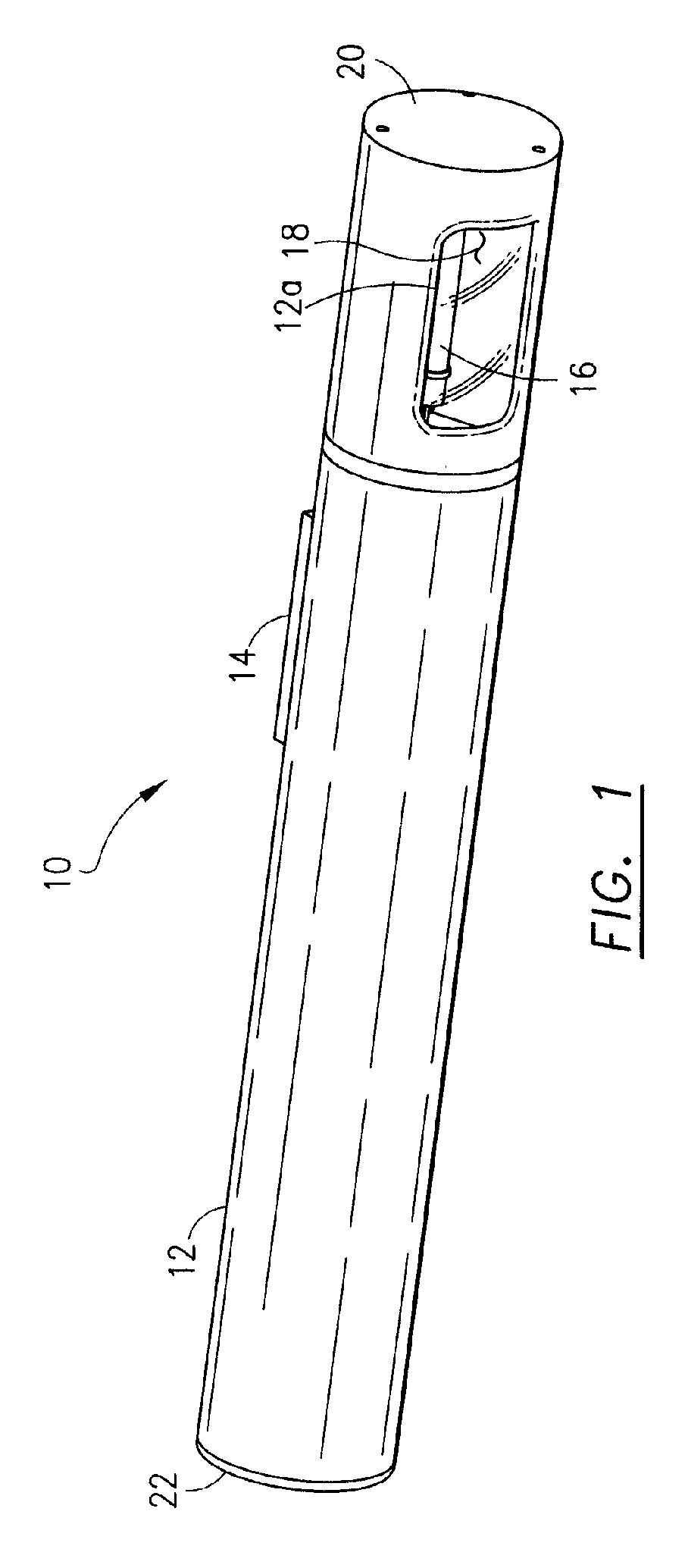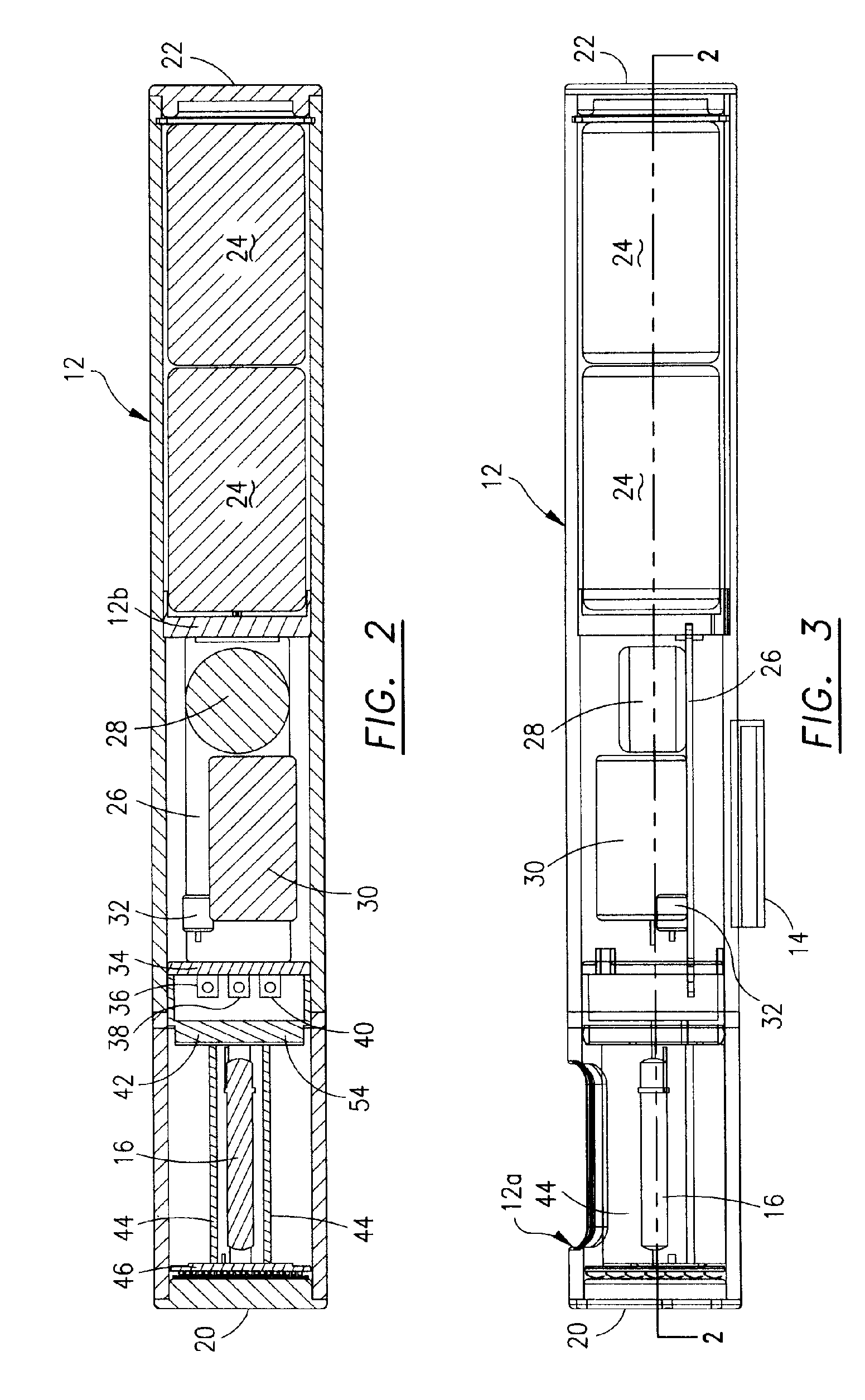Electronic flare
a technology of electric flares and flares, which is applied in the field of emergency flares, can solve the problems of inconvenient use, inconvenient storage of phosphorus flares aboard a vessel, and inability to achieve high-intensity light transmission, etc., and achieves the effects of reducing the use of pyrotechnic flares, safe for users, and effective
- Summary
- Abstract
- Description
- Claims
- Application Information
AI Technical Summary
Benefits of technology
Problems solved by technology
Method used
Image
Examples
Embodiment Construction
[0030]Referring now the drawings and, in particular, FIG. 1, one embodiment of the present invention is shown generally at 10 comprised of a tubular housing 12 having sealed end caps 20 and 22. The housing 12 is a tubular rigid structure constructed of plastic or metal. The electronic flare 10 includes an exterior magnetic switch 14 to turn the strobe light flash tube 16 to the “on” position illuminating the light. The housing 12 has an aperture 12a covered by a clear plastic 18 in the upper portion that provides for a directed beam of light that eminates from inside the tubular housing 12 less than 6 steradians of solid angle.
[0031]Referring now to FIGS. 2 and 3, the outer housing 12 is shown as a tubular housing divided into three different sections by panel 12b and panel 34 which is discussed below. Two batteries 24 are mounted in series in the battery section which is separated from the rest of the device by partition 12b which may be an electrical insulative separation. The bat...
PUM
 Login to View More
Login to View More Abstract
Description
Claims
Application Information
 Login to View More
Login to View More - R&D
- Intellectual Property
- Life Sciences
- Materials
- Tech Scout
- Unparalleled Data Quality
- Higher Quality Content
- 60% Fewer Hallucinations
Browse by: Latest US Patents, China's latest patents, Technical Efficacy Thesaurus, Application Domain, Technology Topic, Popular Technical Reports.
© 2025 PatSnap. All rights reserved.Legal|Privacy policy|Modern Slavery Act Transparency Statement|Sitemap|About US| Contact US: help@patsnap.com



